Huawei Technologies EC228 CDmA2000 1X EV-Do USB Modem User Manual II
Huawei Technologies Co.,Ltd CDmA2000 1X EV-Do USB Modem II
Contents
- 1. User Manual I
- 2. User Manual II
User Manual II
Wonderful Communication, Mobile Life.
HUAWEI Mobile Partner
User Manual

Copyright © 2007 Huawei Technologies Co., Ltd.
All Rights Reserved
No part of this manual may be reproduced or transmitted in any form or by any
means without prior written consent of Huawei Technologies Co., Ltd.
Trademarks
and HUAWEI are trademarks of Huawei Technologies Co., Ltd. All other
trademarks mentioned in this manual are the property of their respective holders.
Notice
The information in this manual is subject to change without notice. Every effort
has been made in the preparation of this manual to ensure accuracy of the contents,
but all statements, information, and recommendations in this manual do not
constitute the warranty of any kind, expressed or implied.
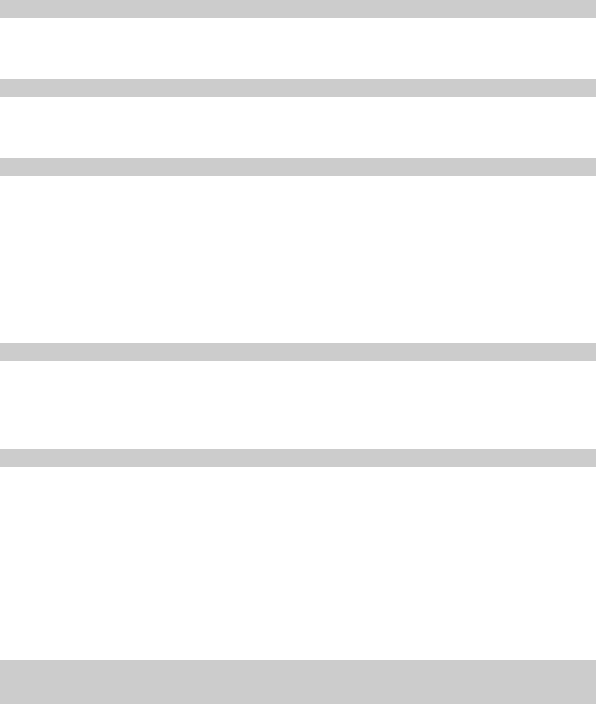
i
Contents
1 Descriptions of the Mobile Partner GUI...............................................................................1
Launch the Mobile Partner ............................................................................................1
Interface Overview ........................................................................................................1
2 Internet Services....................................................................................................................3
Accessing the Internet ...................................................................................................3
Statistics Information.....................................................................................................3
3 Text Services .........................................................................................................................5
Creating and Sending a Message ..................................................................................5
Inbox ..............................................................................................................................5
Outbox ...........................................................................................................................7
Important, Draft, Deleted and Reports ..........................................................................7
Viewing a Message in the UIM Card (Optional) ..........................................................7
Text Message Settings ...................................................................................................8
4 Phonebook...........................................................................................................................10
Phonebook Management in Local...............................................................................10
Phonebook Management in the UIM Card (Optional) ...............................................12
Import/Export ..............................................................................................................13
5 Settings and Information Query..........................................................................................15
Switching a Language .................................................................................................15
PIN Operations (Optional) ..........................................................................................15
Choosing a Device.......................................................................................................16
Viewing Diagnostics Information ...............................................................................16
Startup Settings............................................................................................................17
Network Settings .........................................................................................................17
Connection Profile Settings.........................................................................................17
6 FAQs....................................................................................................................................19
7 Acronyms and Abbreviations..............................................................................................20
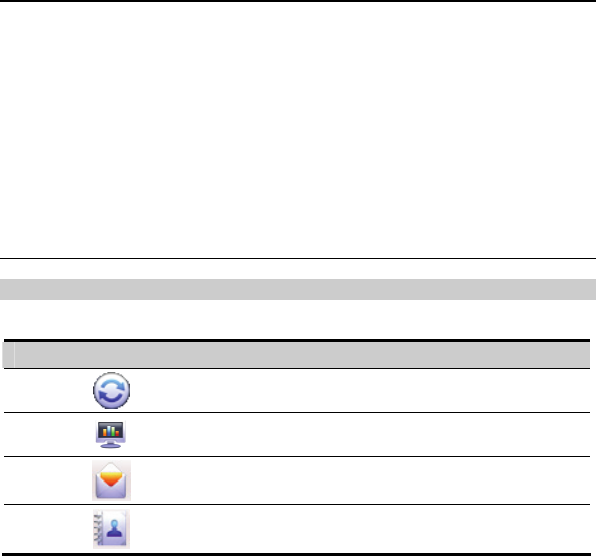
1
1 Descriptions of the Mobile Partner
GUI
Launch the Mobile Partner
To launch the Mobile Partner, double-click the shortcut icon of the Mobile Partner on the
desktop.
Note:
y If you are required to enter the Personal Identification Number (PIN) code, enter
the correct one and click OK. If you fail to enter the correct PIN or PIN
Unblocking Key (PUK) code, the network-related functions are unavailable.
y Contact your service provider for whether a User Identity Module (UIM) card is
needed.
Interface Overview
Shortcut Icons
The following table lists the shortcut icons provided by the Mobile Partner.
Click… To…
Display the Connection interface.
Query the statistics of the transferred data.
Display the Tex t interface.
Display the Phonebook interface.
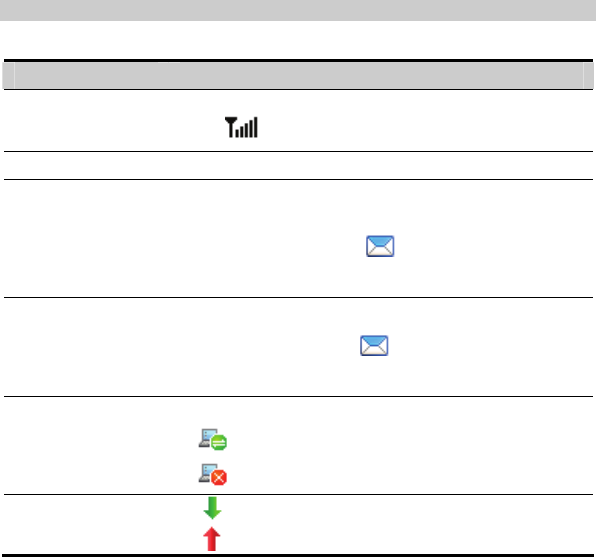
2
Status Information
The following table lists all the possible status information.
Status Information Description
Network signal Indicate the signal strength of the network by the following
icons:
Network information Display the profile of the current network.
New message If the Text message prompt is enabled, when there is a new
message:
y In the status bar, the icon flashes.
y On the lower right corner of the PC screen, the Prompt
dialog box is displayed.
Unread message When there is an unread message:
y In the status bar, the icon flashes.
y When you move the cursor to the icon, the number of the
unread message(s) is displayed.
Network connection The information of the network connection:
y : The network is connected.
y : The network is disconnected.
Transferred data y : Data download is in progress.
y : Data upload is in progress.
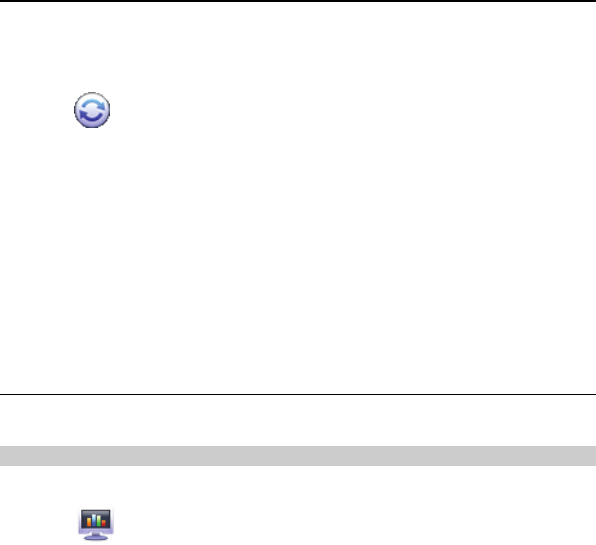
3
2 Internet Services
Accessing the Internet
After setting the network and connection profiles, you can access the network through the
Mobile Partner.
You can connect the network by one of the following options:
1. Click .
2. Select the correct profile in the drop-down arrow.
3. Click Connect to set up the connection.
4. Launch the browser on the PC to access the internet.
Note:
y When the connection is established, the main interface displays the details of the
current network, including connected duration, data statistics, transferred rate
and so on.
y When the connection is established, choose Disconnect to disconnect from the
network.
Statistics Information
You can use the Statistics function to check the traffic of the network.
Viewing the Statistics Information
You can do as follows to view the statistics information:
1. Click to display the statistics interface.
2. In the navigation tree, click the following tabs to display the corresponding diagram.
y Transfer: View the uploaded/downloaded speed and data of the current connection.
y Statistics: View the current connected duration, last reset time, and
daily/monthly/yearly uploaded and downloaded data.

4
Note:
The statistical data of the traffic is only for your reference. The actual traffic
information is accounted on the basis of the traffic data collected by the operator.
Resetting the Statistics Information
You can operate as follows to reset the statistics information:
1. In the navigation tree, right-click a tab.
2. Choose Reset Statistics.
3. In the Confirm dialog box, click Ye s .
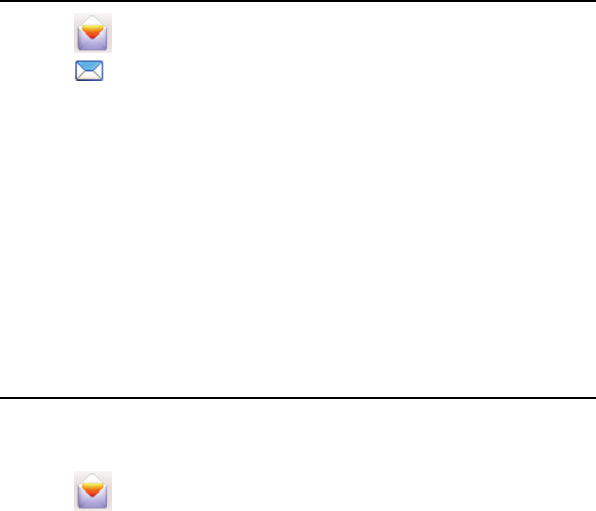
5
3 Text Services
The Mobile Partner provides Text services. The local mailbox can store the messages
without capacity limitation and can be easily managed.
Creating and Sending a Message
1. Click to display the Text interface.
2. Click to display the New interface.
3. Enter the recipient number by one of the following options:
y Click Send To.... Then select a phone number in the Select Number interface.
y Enter the recipient number directly.
4. Enter the message content.
5. After the edit, you can choose the following options:
y Click Send: To send the message.
y Click Save: To save the message in the draft.
y Click Close: To exit from editing the current message. If you click Ye s in the Confirm
dialog box, the message can be saved in the Draft.
Note:
y You can group send a message to up to 20 phone numbers. Each number should
be separated by ";".
y You can enter up to 2,048 characters in a message each time.
Inbox
Inbox stores the received messages.
To display the Inbox interface, do as follows:
1. Click to display the Text interface.
2. Choose Local > Inbox to display the Inbox interface.
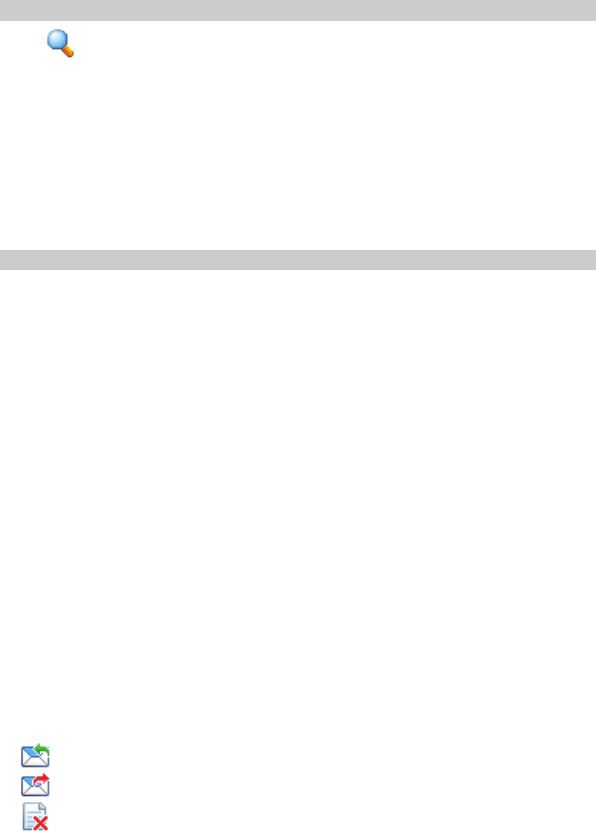
6
Searching a Message
Click . Then enter the name/phone number of the message sender, part of the message
content or received time.
Note:
y You can enter part of the message content to search.
y When you search the message, a list of the matched messages is updated
automatically according to your entered information. The matched contacts in
the searched group are displayed. None is displayed when no matched message
can be searched.
Viewing a Message
You can view a message in the inbox as follows:
1. Display the Text interface and select a message to read.
2. Click the selected message.
The name and phone number of the message sender, message content and receiving
time are displayed below the message list.
3. Right-click the selected message for the following options:
y Edit: Re-edit the message.
y Reply: In the Edit interface, re-edit the message and send it to the message sender.
y Forward: Forward the message to another person
y Call: Make a call to the message sender
y Save Number: In the New Contact interface, enter other information and save the
contact.
y Delete: Delete the message.
y Delete All: Clear all the messages in the inbox.
Note:
y You can press and hold Shift or Ctrl, and click the selected messages; or you
can press Ctrl + A to select all the messages in the list.
y The messages deleted from the inbox are stored in the Deleted box.
y You can forward only one message a time.
You can also click the shortcut icons above the message list to perform the following
operations:
y : Reply the selected message.
y : Forward the selected message.
y : Delete the selected message.
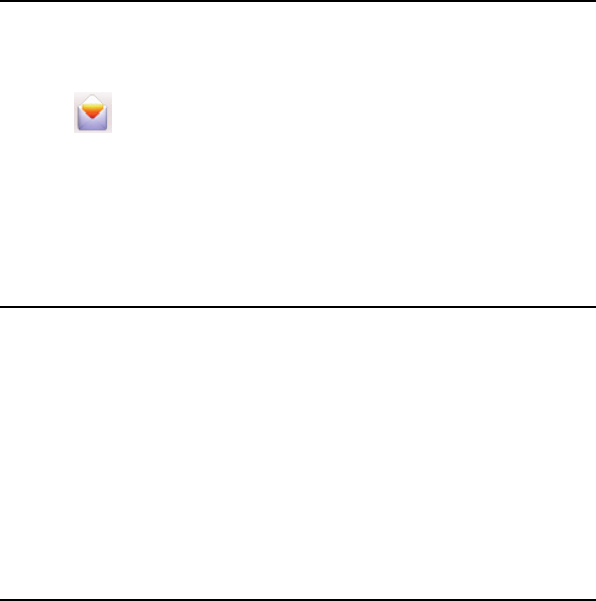
7
Outbox
Outbox stores the sent messages, including the messages sent both successfully and
unsuccessfully.
To display the Outbox interface, do as follows:
1. Click to display the Text interface.
2. Choose Local > Outbox to display the Outbox interface.
Note:
y For details, refer to "Inbox" on page 5.
y To the group sending messages, you cannot call the message recipients.
Important, Draft, Deleted and Reports
Important stores your important messages.
Draft stores the drafts of messages.
Deleted stores the messages deleted from the local mailbox.
Reports stores the delivery notifications after sending messages.
Note:
y For details, refer to "Inbox" on page 5.
y If you delete the messages in the Deleted box, the messages will be deleted
permanently. Be cautious with your operation.
Viewing a Message in the UIM Card (Optional)
If a UIM card is used in your terminal, you can save the sent and received messages in the
UIM card.
The operations to the messages in the UIM card are as same as those to the messages in the
local message box. For details, refer to "Inbox" on page 5.
Note
y Contact your service provider for whether a UIM card is needed.
y The UIM card is supplied by the service provider. For details, contact your
service provider.
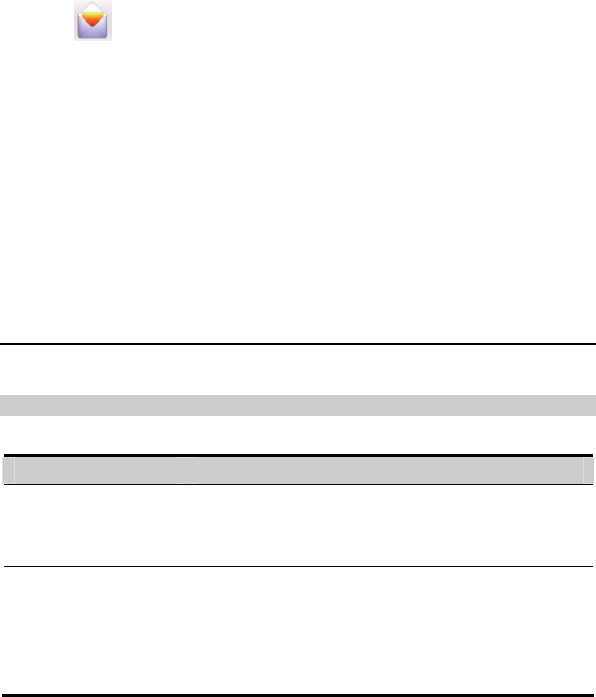
8
y If your terminal does not need a UIM card, you can save the sent and received
messages in the terminal. The operations to the messages in the terminal are as
same as those to the messages in the UIM card.
You can move a message from the UIM card to the local inbox or local outbox.
1. Click to display the Text interface.
2. Click the UIM tab.
3. Select one or more contacts in the contact list and right-click.
4. Right-click the selected message(s) for the following options:
y Move to Local: Move the selected messages from the UIM card to Local.
y Move All to Local: Move all the messages from the UIM card to Local.
5. In the Confirm dialog box, click OK.
Note:
y When the messages in the UIM card are moved to Local, the messages are
deleted from the UIM card.
y The received messages in the UIM card are moved to the local inbox, and the
sent messages in the UIM card are moved to the local outbox.
Text Message Settings
Choose Tools > Option, and click the Text Message folder.
Text Alerts Settings
You can select the visual prompt and audio prompt.
Option Description
Show a notification
when a new text
message arrives
When there is a new text message, a dialog box is
displayed. Then you can:
y Click View to view the new message.
y Click Close to view the message later.
Play a sound when a
new text message arrives
You can perform the following operations:
y Click Browse to select a text message tone file.
y Click Test to play the text message tone; click Stop to
stop playing the text message tone.
Then, when there is a new message, the selected text
message tone is played.

9
Note:
The Text message tone can be a *.wav or *.mid file.
Setting the Text Message Priority
You can set the text message priority, to label the message with their preferences.
The text message priority includes such options as Normal, Urgent and Emergency.
Requesting a Delivery Report
You can select Request delivery report to enable the delivery report function.
When the function is enabled, the network can deliver a status report of the sent message.
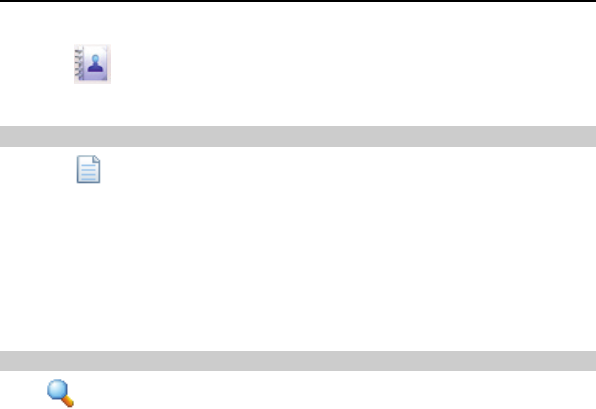
10
4 Phonebook
You can manage contacts in the phonebook conveniently by the Mobile Partner.
Phonebook Management in Local
You can do as follows to enter the local phonebook:
1. Click to display the Phonebook interface.
2. Click Local in the navigation tree.
Creating a Contact
1. Click to display the New Contact interface.
2. Enter the information.
3. Click OK to save the contact.
Note:
The contact information cannot be null or contain spaces or new-line characters
only.
Searching a Contact
Click . Then enter the contact information.
Note:
y You can enter part of the contact information to search.
y When you search the contact, the contact list is updated automatically according
to your entered information. The matched contacts in the searched group are
displayed. None is displayed when no matched contact can be searched in the
group.

11
Viewing a Contact
You can view a contact as follows:
1. Enter the local phonebook, select a contact to view.
2. Click the selected message.
The contact name, mobile number, office number, home number, E-mail address and
remarks are displayed below the contact list.
3. Right-click the selected message, and you can do as follows:
y Edit Contact: Change the information of the contact.
y Delete Contact: Delete the contact.
y Send: Send a message or name card to the mobile number of the contact.
You can also click the shortcut icons above the contact list to perform the following
operations:
y : Edit the selected contact.
y : Delete the selected contact.
y : Send a message or name card to the mobile number of the contact.
Group Management
You can create a group to manage the local contacts by category.
Creating a Group
You can create a group to manage local contacts by category.
1. Right-click Local in the navigation tree, and choose New Group.
2. Enter the group name.
Note:
y The group name cannot be null or identical to any existing one.
y You can manage only local contacts by group.
Modifying a Group Name
1. Select a group to modify.
2. Right-click the selected group in the navigation tree, and choose Rename Group.
3. Enter the new group name.
Note:
You cannot rename the default Local groups.

12
Adding a Contact
You can add a contact from Local to another group as follows:
1. Select one or more contacts in Local.
2. Drag the selected contacts to another group.
Note:
When you drag the selected contact(s), if you press and hold Ctrl, the contact(s)
can be copied to another group; otherwise, the contact(s) are moved to another
group.
You can add a contact to a group as follows:
1. Select a group in the navigation tree.
2. Click ; or right-click in the contact list and choose New Contact.
3. Enter the information.
Removing a Contact
1. Display the contact list of a group.
2. Select a contact to remove.
3. Right-click the selected contact and choose Remove from Group.
Note:
The contact is removed from the group but not deleted.
Deleting a Group
1. Right-click a group in the navigation tree and choose Delete Group.
2. Click OK.
Note:
When you delete a group, contacts in the group cannot be deleted. They are still in
the phonebook of Local or in other groups.
Phonebook Management in the UIM Card (Optional)
If a UIM card is used in your terminal, you can save the contacts in the UIM card.
The operations on the contacts in the UIM card are similar to those on the contacts in Local.
For details, refer to "Phonebook Management in Local" on page 10.
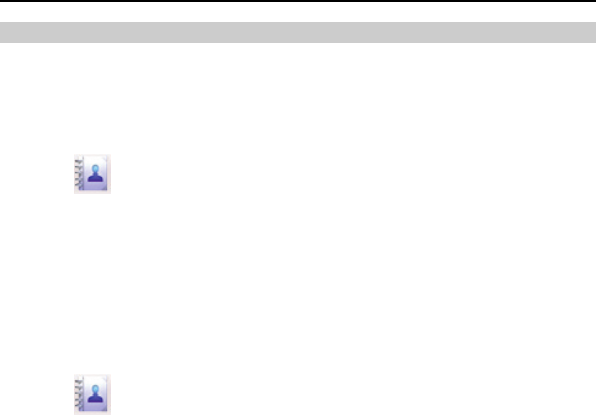
13
Note:
y Contact your service provider for whether a UIM card is needed.
y The UIM card is supplied by the service provider. For details, contact your
service provider.
Import/Export
Import/Export the Contacts from Local Phonebook
You can export the contacts from Local to a *.csv file, and import the contacts from a *.csv
file to phonebook in Local.
Importing Contacts
You can import the contacts from a *.csv file to the local phonebook.
1. Click to display the Phonebook interface.
2. Click Local in the navigation tree.
3. Right-click the contact list and choose Import….
4. Choose a file to import. Click Open to display the Map interface.
5. Drag the value in the file to the corresponding field on the right respectively.
6. Click OK.
Exporting Contacts
You can export contacts from the local phonebook. The exported contacts can only be saved
in a *.csv file.
1. Click to display the Phonebook interface.
2. Click Local in the navigation tree.
3. Choose one of the following operations:
y Right-click the contact list and choose Export All Contacts.
y Choose one or more contacts and right-click to choose Export Selected Contacts.
4. Choose the path to save the contact(s).
5. Enter the file name and click Save.
Note:
You can press and hold Shift or Ctrl, and click the selected contacts; or you can
press Ctrl + A to select all the contacts in the list.

14
Import/Export the Contacts from the UIM Card (Optional)
If a UIM card is used in your terminal, you can export the contacts from the UIM card to a
*.csv file, and import the contacts from a *.csv file to phonebook in the UIM card.
The operations on the contacts in the UIM card are similar to those on the contacts in Local.
For details, refer to "Import/Export the Contacts from Local Phonebook" on page 13.
Note:
y The maximum number of contacts that can be saved in the UIM card is subject
to the capacity of the UIM card.
y When you import contacts to the UIM card, if its capacity is full, the import
stops automatically. The content of the imported contacts is not affected.
y In the local phonebook, select one or more contacts. Drag the contact(s) to the
UIM card in the navigation tree. Then the contact(s) are exported to the
phonebook of the UIM card.
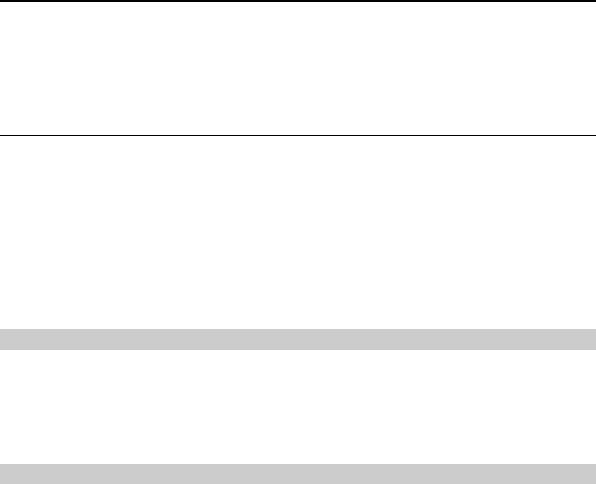
15
5 Settings and Information Query
Switching a Language
The Mobile Partner provides several interface languages for you.
During the running of the software, you can choose Tools > Language to switch the
languages.
PIN Operations (Optional)
If a UIM card is used in your terminal, the Personal Identity Number (PIN) code protects
your card from unauthorized use. You can modify the PIN code and enable/disable the PIN
verification.
Note:
The PIN code and PIN Unblocking Key (PUK) code are provided along with your
UIM card. For details, contact your service provider.
Enabling/Disabling the PIN Verification
You can enable the PIN verification. If it is enabled, you need to verify the PIN code when
launching the Mobile Partner again.
y To enable: Choose Tools > PIN Operations > Enable PIN Verification.
y To disable: Choose Tools > PIN Operations > Disable PIN Verification.
Modifying the PIN Code
1. Choose Tool s > PIN Operations > Modify PIN.
2. In the Modify PIN dialog box, enter the current PIN code and the new PIN code.
3. Enter the new PIN code again.
4. Click OK to complete the modification.
Note:
The PIN code should be a numeric string of 4 – 8 digits.
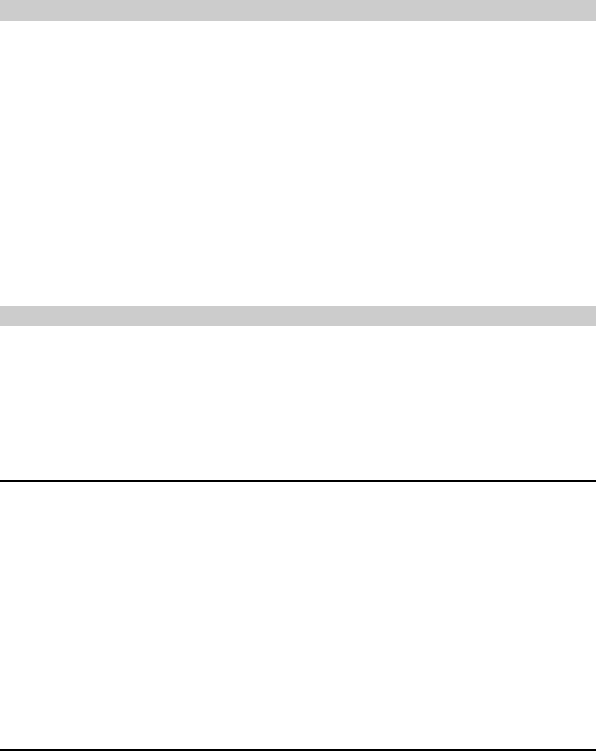
16
Entering the PIN Code
When the PIN verification is enabled, you need to enter the correct PIN code to use the
network-related functions.
1. After the Mobile Partner is launched, the Enter PIN dialog box is prompted.
2. Enter the correct PIN code.
3. Click OK to complete the verification.
Note:
y If you enter wrong PIN codes for a preset number of times, the UIM card is
locked and you cannot use it until you enter the PUK code. The Mobile Partner
prompts you the remaining number of attempts for entering the PIN code or the
PUK code.
y When the UIM card is locked, you can still dial emergency numbers.
Unlocking the PIN
1. When the UIM card is locked, the Unlock PIN dialog box is displayed after you start
the Mobile Partner.
2. Enter the correct PUK code.
3. Enter the new PIN code.
4. Click OK to complete the modification.
Choosing a Device
The Mobile Partner can support different terminal products.
When the Mobile Partner is launched, it searches the matched terminal automatically. If two
or more terminals are found, the connected terminals are displayed on the Choose Device
interface. You can choose a terminal to run and click OK.
If two or more supported terminals are connected with the PC, you can change or choose a
device during the running of the Mobile Partner.
1. Choose Tool s > Choose Device.
2. Select a device in the device list.
3. Click OK to terminate the current terminal and switch to the selected one.
Viewing Diagnostics Information
Choose Tools > Diagnostics to view the information of the Mobile Partner, such as the
number of messages and contacts, firmware version, hardware version, and IMSI number.

17
Startup Settings
You can set the Mobile Partner to launch automatically along with Windows and minimize
the interface after the startup.
1. Choose Tools > Options.
2. Click General in the navigation tree.
3. You can choose the following options:
y Select Launch on Windows startup: The Mobile Partner launches automatically
along with Windows.
y Select Minimize window on startup: The interface of the Mobile Partner is
automatically minimized after the Mobile Partner is launched.
4. Click OK to complete the settings.
Network Settings
You can select different network types to quickly search and access the network.
1. Choose Tool s > Options.
2. In the navigation tree, click Network.
3. Click the Network Type tab.
4. You can choose the following options:
y CDMA Only: The terminal can connect to the CDMA network only.
y EVDO Only: The terminal can connect to the EVDO network only.
y Hybrid: The terminal can connect to the CDMA and EVDO network both.
Connection Profile Settings
To display the Dial-Up interface, you can do as follows:
1. Choose Tool s > Options.
2. In the navigation tree, click Profile Management.
3. Click the Dial-Up tab.
Note:
For details about setting the profile, contact your service provider.
Creating a Dial-up Profile
1. Click New to set the profile name, access number, user name, password, Access Point
Name (APN) and APN status, and select a default device.
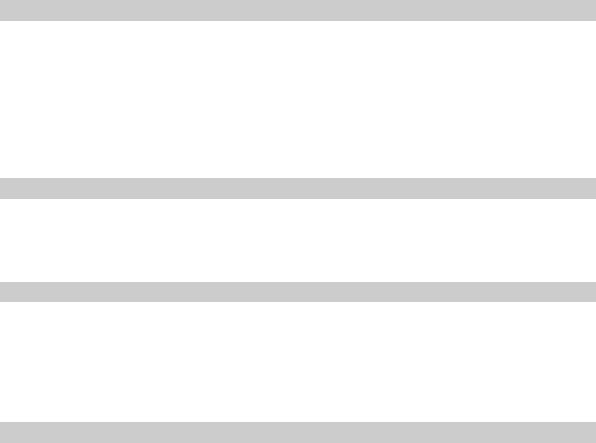
18
2. Click Advanced to set the IP information, authentication protocol, Domain Name
Server (DNS) and Windows Internet Name Service (WINS).
3. Click OK to save the advanced settings and return to the Dial-Up interface.
4. Click OK and the Prompt dialog box is displayed.
5. Click Ye s to save the settings; or click No to cancel the settings.
Editing a Dial-up Profile
1. In the Profile Name drop-down combo box, select a setting.
2. Click Edit to modify the profile name, access number, user name, password, APN
name and APN status, and select a default device.
3. Click Advanced to set the IP information, authentication protocol, DNS and WINS.
4. Click OK to save the advanced settings and return to the Dial-Up interface.
5. Click OK and the Prompt dialog box is displayed.
6. Click Ye s to save the settings; or click No to cancel the edits.
Deleting a Dial-up Profile
1. In the Profile Name drop-down combo box, select a setting.
2. Click Delete and the Prompt dialog box is displayed.
3. Click Ye s to delete the setting; or click No to cancel the deletion.
Importing a Dial-up Profile
1. Click Import and the Import interface is displayed.
2. You can choose the following options:
y Select the network operator(s) in the list.
y Click Browse and choose a *. prof file to import. Then click Open.
3. In the Import interface, click OK.
Exporting a Dial-up Profile
1. Click Export and the Export interface is displayed.
2. Select one or more network operators and click OK.
3. Select the path to save the file and enter the file name. Then click Save.
Note:
The dial-up profile of the selected operator is exported to a *. prof file (a
configuration file).
19
6 FAQs
What shall I do if I cannot access the Internet?
1. Check the network signal strength.
2. Check whether you have activated the wireless online service. You can ask the local
network operator on how to activate it.
3. If the wireless online service is activated, check network settings according to the
instructions in "Internet Services" on Page 3.
Why only part of the pasted content can be displayed during the
edit?
When editing a message, at most 2048 characters can be entered. If the quantity of the
pasted information exceeds the limit, the exceeding part will be deleted automatically.
When a message is received, no prompt is displayed. Why?
You have not set the vision alert of messages.
Choose Tools > Options > Text. In the Text handing area, select Show a notification
when a new text arrives.
Why the phone number cannot be pasted?
A valid phone number can only contain "0123456789#*+". Confirm that no other character
is in the cut or copied text.
20
7 Acronyms and Abbreviations
Numerics
3G The Third Generation
A
APN Access Point Name
C
CDMA Code Division Multiple Access
D
DNS Domain Name Server
E
EVDO Evolution Data Optimization
P
PIN Personal Identification Number
PUK PIN Unblocking Key
U
UIM User Identity Module
W
WINS Windows Internet Name Service